I understand that similar questions have already been asked but haven't been able to apply them on my problem.
I am working on Double integrator circuit as below (to simulate a physical system for my project on control system performance): 
The actual input to point A is expected to take values from -2.5V to +2.5V. The circuit (physical one) is not working as expected, which has me guessing on the location of possible fault in it. Replacing both OPAMPs (UA741CP) and checking the capacitors(C1 and C2) didn't help much and now my doubt lies on the polarity of these capacitors (which sadly I didn't notice while taking over the circuit). As my input range is both negative as well as positive i am not sure about them. Could some one help please.
Secondly, given the circuit, if I want to check the individual integrators, by applying signal to A (DC pulse train maybe?) and monitoring output at B for IC1 (one on the left) and similarly at respective points for IC2 (pardon for not having marked). Should it work, or having been connected the circuit behaves differently as opposed to two integrators in isolation. Pardon my parlance for I have not much of electronics background. Thanks
EDIT
Output observation. As my knowledge of control system theory is limited, I'll do my best to explain my setup concisely (as I have understood). The actual system is created in levels cascaded as below:
1) Arduino as controller (8bit output) --->
2) DAC using DAC0808 and UA741 --->
3) -2.5 voltage shifter ---->
4) Integrator circuit (simulating the Plant and the one questioned) --->
5) Analog inputs to arduino as Plant state output which are worked upon by the arduino and the actuation value is calculated and sent back to it via route 1) through 4)
Upon setting state space parameters in the controller code. The Plant (output voltage) could be brought a desired reference point (in a given range 2~5V, as I have dont it previously on the same circuit). Now it does not. The output voltage would stay very low 0~500mV irrespective of control input.
I could test the other circuits (DAC and level shifter) by applying inputs and monitoring them. Couldn't find anything definitive with the integrator though.
